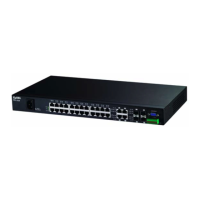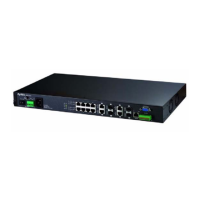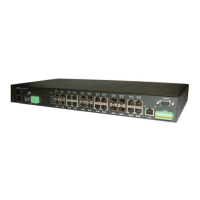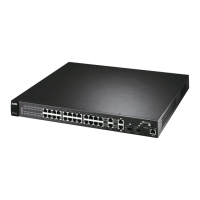Chapter 36 voip Commands
Management Switch Card User’s Guide
1090
36.15 voip sip keypattern Commands
Use this screen to configure the key pattern feature in the VoIP line card. A key pattern profile is a
set of telephone key-presses that allow users to access a variety of features such as call hold, call
transfer, and so on.
36.15.1 voip sip keypattern delete Command
Syntax:
voip sip keypattern delete <name>
where
This command removes the specified key pattern table. An example is shown to delete the key pattern table
named “keypat_table”.
36.15.2 voip sip keypattern map Command
Syntax:
voip sip keypattern map [<name>]
This command displays the SIP call service profile(s) that refer(s) to the specified key pattern table.
An example is shown using the key pattern table named “keypat_table”.
36.15.3 voip sip keypattern set Command
Syntax:
voip sip keypattern set <name> <service-type> <pattern>
where
This command allows users to enable the “do not disturb” VoIP feature by pressing “#100”.
<name> =
The key pattern table name (up to 31 characters).
ras> voip sip keypattern delete keypat_table
ras> voip sip keypattern map keypat_table
<name> =
The name of the keypattern profile (up to 31 characters).
<service
type>
= callreturn | calltransfer | callwaitdisconn|
callwaitoff | callwaiton | callwaitonhold | callwaitreject|clir
| dndoff | dndon | callin
<pattern> =
The pattern describes the telephone keys a user presses to access a particular
service. Use up to 7 characters. Allowed characters are 0~9, *, and #.
Examples: 43#
ras> voip sip keypattern set keypattern1 dndon #100
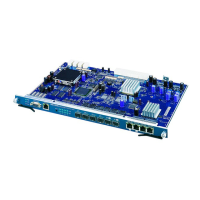
